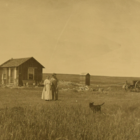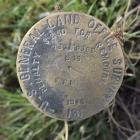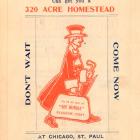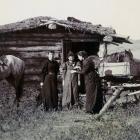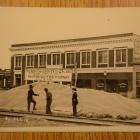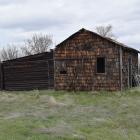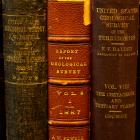Further Reading
Edwards, Richard, Jacob Friefeld, and Rebecca Wingo. Homesteading the Plains: Toward a New History. Lincoln: University of Nebraska Press, 2017.
Gates, Paul Wallace. History of Public Land Law Development. Washington, DC: GPO, 1968.
Gregg, Sara M. “Imagining Opportunity: The 1909 Enlarged Homestead Act and the Promise of the Public Domain.” Western Historical Quarterly 50 (Autumn 2019): 257–279.
Raban, Jonathan. Bad Land: An American Romance. New York: Vintage Books, 1996.
Hall, Tom G. “Wilson and the Food Crisis: Agricultural Price Control during World War I.” Agricultural History 47 (January 1973): 25–46.
Hargreaves, Mary. Dry Farming in the Northern Great Plains, 1900–1925. Cambridge: Harvard University Press, 1957.
LaDow, Beth. The Medicine Line: Life and Death on a North American Borderland. New York: Routledge, 2001.
Malone, Michael, and Richard Roeder. Montana: A History of Two Centuries. Seattle: University of Washington Press, 1976.
Olmanson, Eric. “Promotion and Transformation of Landscapes along the CB&Q Railroad.” Environment & Society Portal, Virtual Exhibitions 2011, no. 1. [updated 6 February 2020]. Version 2.0. Rachel Carson Center for Environment and Society.
Peffer, E. Louise. The Closing of the Public Domain: Disposal and Reservation Policies 1900–1950. Stanford: Stanford University Press, 1951.
Van Dam, Andrew. “Using the Best Data Possible, We Set Out to Find the Middle of Nowhere.” Washington Post, 20 February 2018.
U.S. Department of Agriculture Weather Bureau. Climatological Data for the United States by Sections, v. 4, 1917. Washington: Government Printing Office, 1918.
Notes on Archival Material
The National Archives and Records Administration in Washington, DC, holds one of the triplicate copies of all homesteading documentation. The General Land Office records contain hundreds of millions of individual pages, mostly administrative records documenting the process of homestead proofs (over 10 million individual land transactions). Among these records are cached some treasures, including the 99-page transcript of the contest to Lily Stearns’ second claim in 1914, which captures her voice and the ambitions of her neighbors as they sought to control the 160 acres of prime benchland abutting the Milk River. These Land Entry Case Files (General Land Office, Bureau of Land Management, Record Group 49) are available to the public at the National Archives Building at 700 Pennsylvania Avenue, NW, in Washington, DC.



